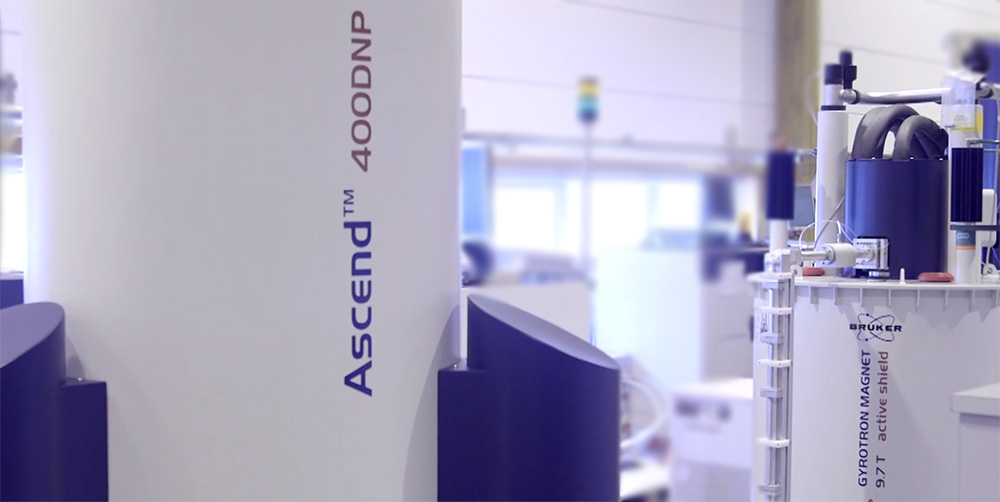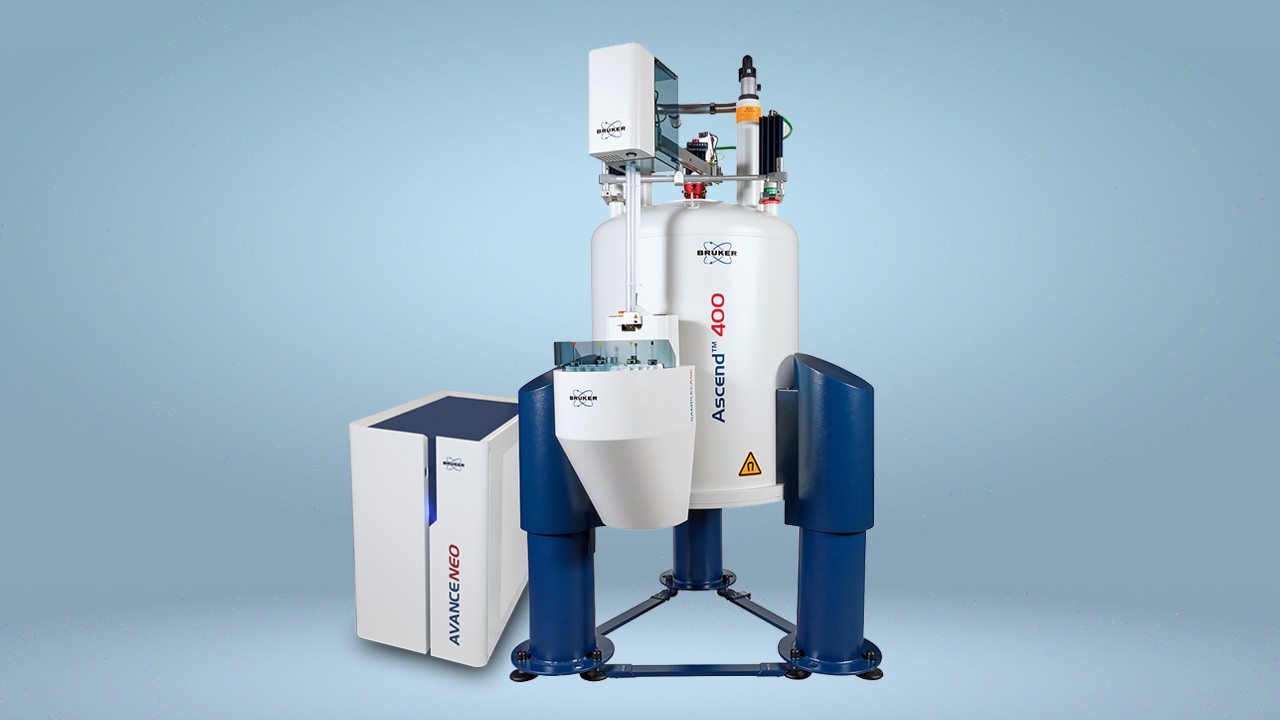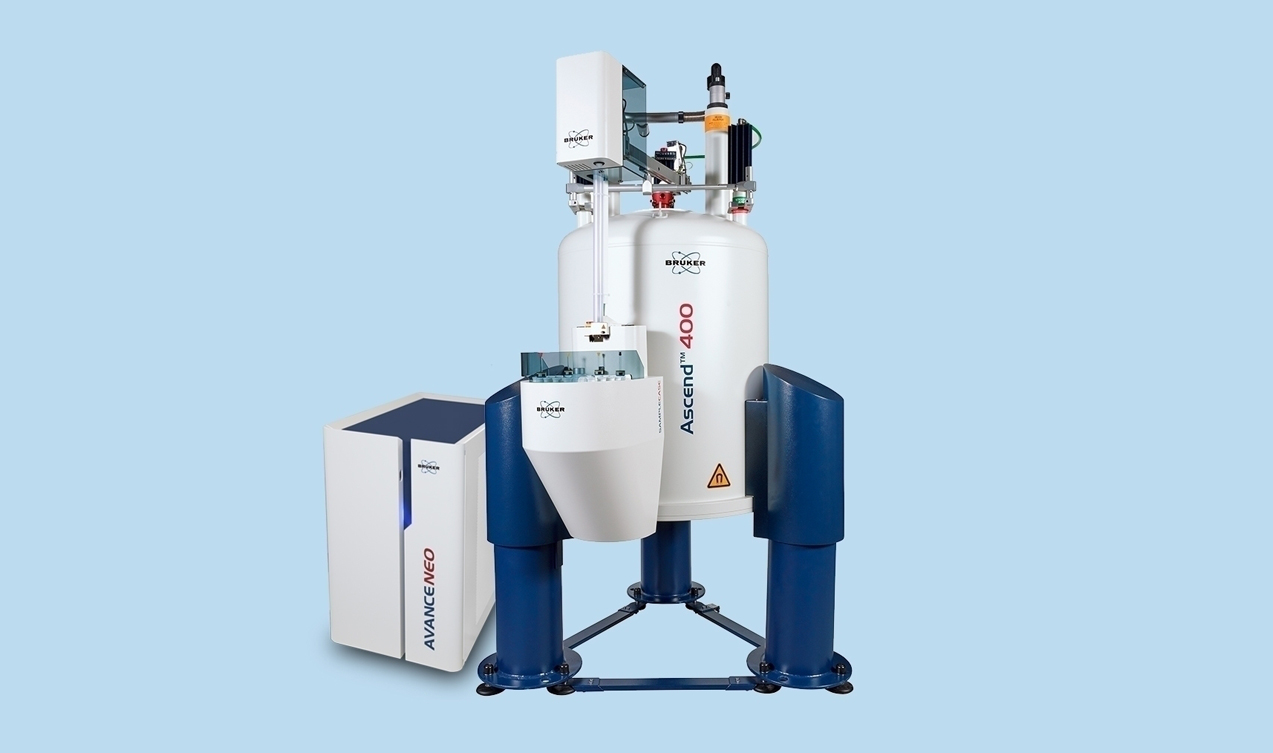

Developing High-Field DNP-NMR
Can you please give an introduction to high-field DNP enhanced solid-state NMR? How can DNP be used to enhance the NMR signal of surfaces?
In a DNP experiment, the large polarization of unpaired electrons is transferred to nearby nuclei providing a theoretical signal enhancement factor of γe/γx, where γe and γx are the gyromagnetic ratios of the electron and the polarized nucleus, respectively (∼658 for 1H). The theory of DNP was developed by Overhauser in the 1950s and experimentally observed on lithium metal by Slichter. In the 80s the first applications of DNP to materials like coal, silicon, and diamond thin films, polymers were reported. At that time, all the experiments were done at low magnetic field and the source of polarization was usually intrinsic to the sample. In the early 1990s, Griffin and co-workers introduced gyrotron sources capable of delivering high-power high-frequency microwaves for DNP experiments at high magnetic fields (>5 T) and combined them with cryogenic MAS probes for experiments at 100 K or lower temperatures. Most modern DNP experiments are done using an external source of polarization (a stable organic radical). Tailor-designed radicals have been recently introduced in order to optimize high-field DNP performance. Using binitroxide radicals in the AMUPol or TEKPol families, whose structure has been specifically designed to optimize polarization transfer by cross-effect, signal enhancement factors of over two orders of magnitude (up to 250 in bulk solutions) are now routinely obtained at magnetic fields of 5–9.4 T and sample temperatures of ca. 80–105 K.
The properties of many modern materials, where dealing with zeolites, metal-organic frameworks, oxides, supported organometallic catalysts are related the fine structure of the surface entities. The rational development of new materials requires structure-property relationships to be established. Solid-state Nuclear Magnetic Resonance (NMR) spectroscopy would be the method of choice for characterizing surfaces were it not that the detection limit of NMR is far too low to allow many modern materials to be examined. The intrinsically low sensitivity of conventional solid-state NMR adds to the low content of active sites and the often disordered and multi-site nature of the surface entities, meaning that the sophisticated multi-nuclear and multi-dimensional experiments required for in-depth structural investigation are not practical for surfaces. This problem can in principle be solved by DNP.
In 2010 in collaboration with Prof. Lyndon Emsley (EPFL Lausanne) and Geoffrey Bodenhausen (ENS Paris) and Prof. Christophe Copéret (ETH Zürich) we have shown on a model mesoporous silica material that DNP Surface Enhanced NMR Spectroscopy (DNP SENS) can increase the NMR signal intensity at surfaces by more than one order of magnitude. DNP SENS has now been applied to record one and two dimensional NMR spectra of many systems including porous and non-porous materials, colloids and molecular organic solids. Sample formulation is key for DNP SENS, and relies on the possibility to introduce a source of polarization (unpaired electrons) in a material, which is in principle free of radical. This should be done without diluting the sample. The protocol that we use is called incipient wetness impregnation, and consists in adding to the material a few drops of a polarizing solution.
In the case of a porous material, the solution fill the pores by capillary action, and thus there is no sample dilution. In the case of particulate materials, the solution will simply wet the surface of the particles. Upon microwave irradiation, the polarization of the electrons is transferred to the nuclei (the protons) of the solvent and then, by proton spin diffusion, to the surface protons. The solution is introduced, not only to add a polarizing source in the sample, but also to transport the hyperpolarization from the source to the target nuclei. A cross-polarization step is usually applied to observe with high sensitivity the surface NMR signal of low-gamma spins like 13C, 15N, 29Si, 27Al, etc. Signal enhancement factors are usually between 10 and 200 and translate into spectacular reductions in experiment times, opening new, unprecedented perspectives for NMR of surfaces.
Why do you have your DNP instruments set up with both low field and high fields?
We have two DNP instruments in our lab, one operating at 400 MHz proton frequency (9.4 Tesla / 263 GHz) and one operating at 800 MHz proton frequency (18.8 Tesla / 527 GHz). The 400 MHz system is fully dedicated to DNP enhanced solid-state NMR of surfaces and materials. This instrument is performing extremely well with robust probes and provides the highest signal amplification factors. It is our workhorse spectrometer, and is very well adapted for applications in a wide range of systems for which the spectral resolution obtained at this field is sufficient. This is also the instrument on which we are pushing the frontiers of DNP by investigating new polarizing sources or by introducing new methods. At 18.8 T instrument, our research work is more exploratory, primarily because the enhancement factors are much lower. With nitroxide biradicals like TEKPol or AMUPol, we typically lose a factor of between four and ten when we go from 400 to 800 MHz. This is intrinsic to the DNP mechanism (the “so-called” cross-effect mechanism) on which the transfer of the polarization between the electrons and the nuclei relies, and as a result, at high field we rarely have enhancement factors higher than 10 or 20 in practical applications. This is one of the current bottlenecks for further developments and applications of high-field DNP, and developing new generation of polarization sources tailor-designed for high field is one of our research objectives.
We are working with the group of Dr. Olivier Ouari and Prof. Paul Tordo at the University of Marseille towards this goal. Recent results on Overhauser DNP are very promising as using this polarization transfer scheme, enhancement of more than 100 could be achieved at 18.8 T. There are many applications where high fields would be essential. One obvious application concerns high-field DNP enhanced quadrupolar NMR as their NMR lines of quadrupolar nuclei sharpen at high field with gains in resolution and sensitivity that are proportional to the square of the main magnetic field. Another key application field for high field DNP is biosolids, for which the resolution at low magnetic field is often not sufficient for site-specific detailed structural investigation.
Why is this so revolutionary?
We have probably not yet fully realized the impact that DNP enhanced solid-state NMR will have in chemistry, and especially in the field of surface characterization. Many, among the studies we have done, would have been simply impossible without the sensitivity gain provided by DNP.
This concerns for example the detailed investigation of functionalized metal organic frameworks, of zeolites, of cementitious materials, of ligand-capped nanoparticles, of surface organometallic catalysts, and so on. More recently, with the groups of Prof. L. Emsley and Prof. C. Copéret, capitalizing on advances in radical design, we have shown how the full 3D structure of a surface entity could be determined for the first time by DNP SENS.
This type of approach will revolutionize the way we will characterize surface species in the future. Scrutinizing surfaces with atomic resolution is an essential step to establish structure-properties relationships, and in fine rationally design tomorrow’s materials. DNP also has a huge potential for pharmaceutical research, where it allows the investigation by NMR of complex formulations without modifying them, by grinding the tablets and impregnating them with a non-solvent polarizing solution. The API and its interactions with the excipients can be probed directly, and the domain size can be measured. These innovative approaches open the way to the fast identification of polymorphs in formulations and of secondary products, and to in situ NMR crystallography.
What are the main challenges that still need to be tackled?
There are still a couple of challenges that need to be tackled to achieve the full potential of solid-state DNP, especially at very high magnetic fields. As already discussed, one of the main challenges lies in the design of new polarization sources, of new radicals suitable for high-field DNP. Current binitroxide radicals typically reach enhancement factors of between 10 and 40 at 18.8 T, which is very far from the theoretical factor of 660 for protons. A lot of efforts are currently devoted to the design of radicals tailored for high-field DNP. This is an active area of research in several groups, including ours.
Another challenge is the sample formulation itself, especially for biological samples, with the perspective of being able to perform DNP experiments at high temperature in order to retrieve spectral resolution or to investigate dynamical processes. Future key advances will also concern the instrumentation, 1) with the development of very fast magic angle spinning probes, capable of spinning small diameter rotors at cryogenic temperatures. The advent of fast MAS probes always brought new perspectives in the history of solid-state NMR, and this will be the same in the DNP context. Current 1.3 mm prototypes allow sample spinning up to 40 kHz and we have shown significant improvement in terms of resolution and coherence lifetimes for both biological solids and materials. 2) with the development of probes that will operate at even lower temperatures than 100 K. 3) with the development of pulsed DNP methods, and of course 4) with the development of improved micro-wave sources.
Is the main challenge probe development?
Yes, the development of probes that will allow faster MAS at 100 K or below as well as better microwave penetration at high magnetic field is certainly one of the main challenges in the near future.
The increase in technology makes things faster and more sensitive. Do you think these developments will make DNP more accessible?
Yes, all these hardware developments will certainly lead to the introduction of lower-cost systems, increasingly easier to handle and maintain, and will make DNP more accessible both in academia and in industry. In parallel the introduction of new, DNP-based, characterization methods and protocols are currently revolutionizing the field.
About Anne Lesage
I am working at the the Center for Very High-Field NMR in Lyon, a research unit of the Institut des Sciences Analytiques (UMR 5280), affiliated with the CNRS (Centre National de la Recherche Scientifique), the UCBL (Université Claude Bernard de Lyon) and the ENS (Ecole Normale Supérieure) de Lyon. I am currently leading the group “NMR for materials”. I received a Master degree of Engineer in 1992 from the Ecole Centrale de Paris, France, and then I did a PhD degree in 1995 at the IBCP Lyon, where I worked on protein structure determination by solution NMR. I got a position at the CNRS in 1994 in the Chemistry Department of the Ecole Normale Supérieure de Lyon, where I have been working with Prof. L. Emsley for more than 20 years, on the development and application of new solid-state NMR methods for the study of the structure and dynamics of solid-state compounds. We, and others, built this NMR Center, which currently hosts 7 spectrometers, including the first 1 GHz worldwide and 3 DNP systems.

